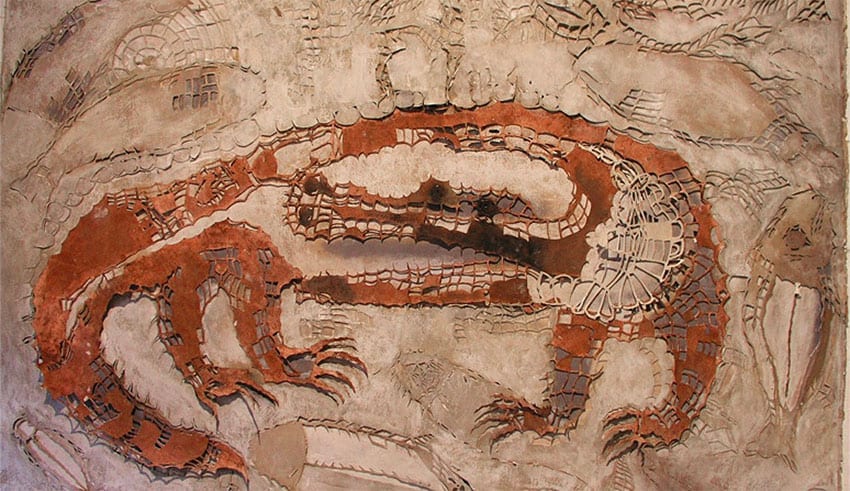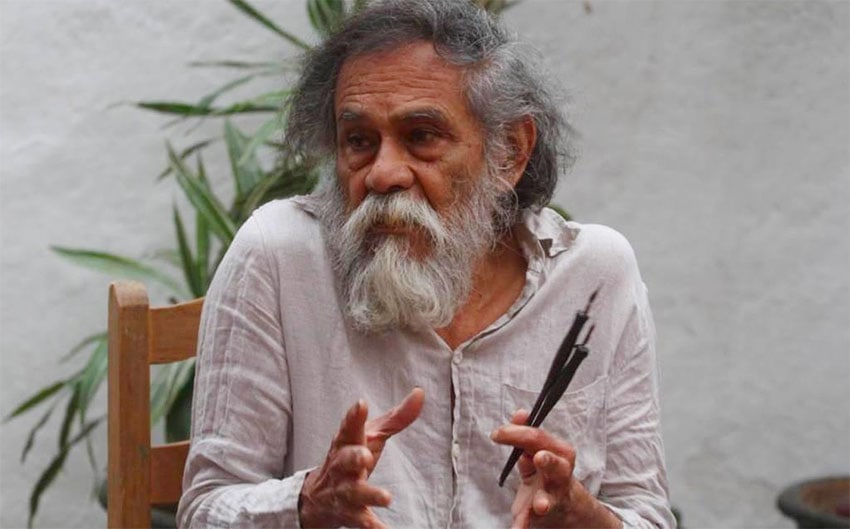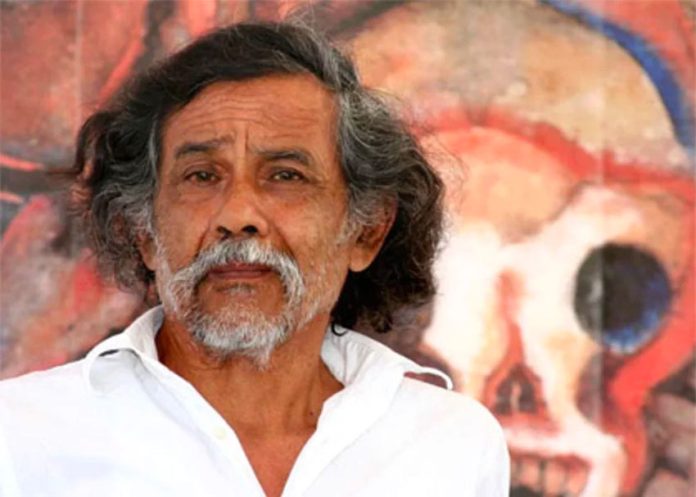Renowned artist, activist and philanthropist Francisco Toledo died on Thursday at his home in Oaxaca city.
Family members confirmed that the artist succumbed to a battle with lung cancer. He was 79.
Toledo, a painter, engraver and sculptor of indigenous Zapotec heritage who incorporated pre-Hispanic techniques in his work, will be remembered as one of the greatest Mexican artists of all time.
His artworks were largely inspired by his experiences growing up in Oaxaca and many feature skeletons, insects such as grasshoppers and animals like alligators, monkeys and tapirs that he encountered in his childhood.
Born in Juchitán in 1940, Toledo moved to Oaxaca city at the age of 12 to study at the same school attended by Mexico’s first indigenous president, Benito Juárez.

“My father had grandiose plans for me, he wanted me to be Benito Juárez,” Toledo said in an interview with the news agency Reuters.
However, a relative noticed his talent as a budding artist and he was transferred to an art school in the state capital.
As a young man in the early 1960s, Toledo traveled to the United States and France, where he worked, learned new techniques and exhibited his art. In Paris, he spent time with Rufino Tamayo, a fellow Oaxaca artist who is considered one of Mexico’s greatest painters.
During a prolific career, Toledo created thousands of works including paintings, drawings, prints, collages, tapestries and ceramics that he exhibited across Mexico and the world.
He was “perhaps the most talented, generous and mystical Mexican artist of an entire generation,” said Guillermo Olguin, a Oaxaca painter and neighbor of Toledo.
“With his leadership . . . and sophistication he put the eyes of the world on a small state like Oaxaca, putting it on the map as an epicenter of art and resistance.”

One painting titled “Tortuga poniendo huevos,” or Turtle Laying Eggs, sold for just over US $1 million in 2018, according to the auction house Christie’s.
Toledo earned international fame and acclaim for his work, winning the Right Livelihood Award – Sweden’s alternative Nobel prize – in 2005 “for devoting himself and his art to the protection and enhancement of the heritage, environment and community life of his native Oaxaca.”
The artist also had a strong social conscience and fought against corruption and to generate greater awareness and respect for natural resources and the environment.
After the disappearance of 43 teaching students in Guerrero in 2014, Toledo made 43 kites, each of which featured the face of one of the missing young men. As the kites were flown in central Oaxaca city, he said that the search for the students mustn’t ever stop – “we must also look for them in the air.”
After a powerful earthquake ravaged parts of Chiapas and Oaxaca – including his native Juchitán – in September 2017, Toledo helped raise funds to rebuild the homes of the victims.
Toledo was also a great supporter and promoter of other Mexican artists, especially those who lived and worked in Oaxaca.
In his later years, he founded the Oaxaca Institute of Graphic Arts (IAGO) as well as a cultural center in Juchitán and helped set up the Oaxaca Museum of Contemporary Art.
In 2015, Toledo transferred ownership of all of his art at IAGO to the National Institute of Fine Arts for just 1 peso.
Toledo also led campaigns to protect the heritage of his home state, famously fighting to prevent the opening of a McDonald’s restaurant just off the central square of Oaxaca city, the construction of a cable car at the Monte Albán archaeological site and a convention center on green space on Oaxaca city’s Fortin hill.
He is survived by his five children including the poet Natalia Toledo, conceptual artist Laureana Toledo and the artist and tattooist Jerónimo López, who is better known as Dr. Lakra.
President López Obrador, who broke the news of Toledo’s death to many Mexicans, lamented the artist’s passing in a post to his Twitter account.
“Art is in mourning,” he wrote.
“The master Francisco Toledo, oaxaqueño, great painter, extraordinary cultural promoter and authentic defender of nature and the customs and traditions of our people, has died. Rest in peace.”
Source: Milenio (sp), Publimetro (sp), Reuters (en)
